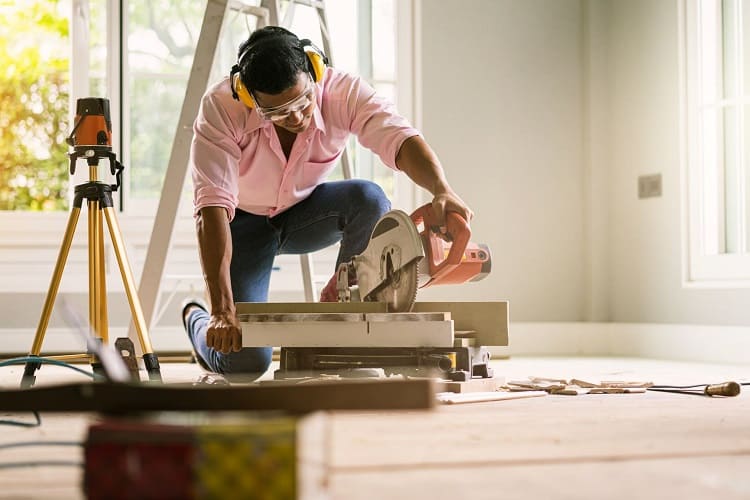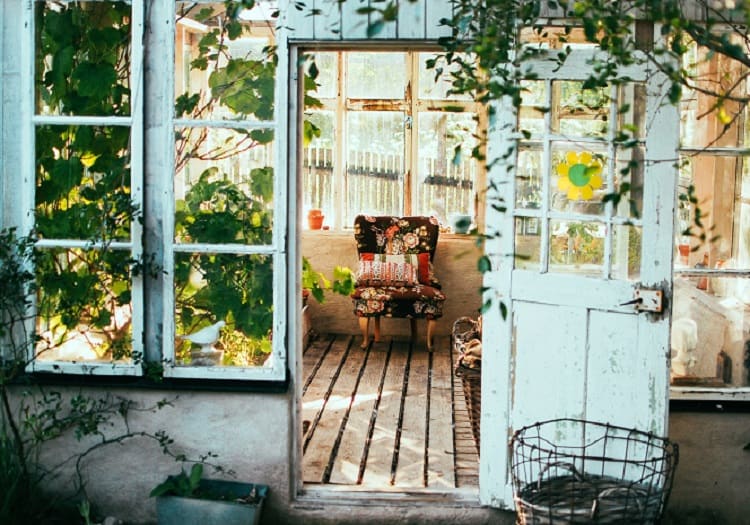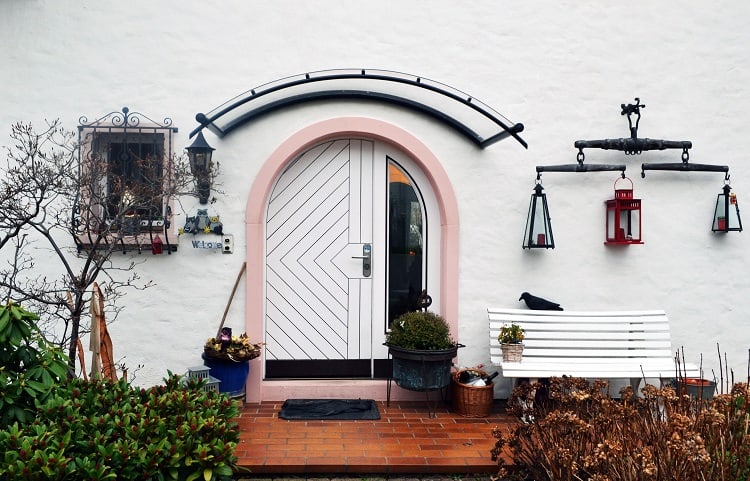If you’re planning to make significant changes to your home — be it inside or to the exterior of the house — there’s a good chance you might need a building permit for that. I know, I know, that comes with paperwork and unplanned trips to submit said paperwork, but all that inconvenience is far better than taking the risk of a badly executed home project compromising the structure and safety of your home.
A building permit ensures that your renovation project or home addition is up to code and doesn’t in any way damage the structural integrity of the house. But that’s not the only permit required when making changes to your house and, depending on the project you have in mind, you might need an electrical, plumbing, or even gas permit before starting the work.
Maybe you’re considering removing a wall to expand a room, adding a window to brighten a darker space, or building a deck in your backyard. Is there legislation in place requiring you to get a permit before you start the project? Here’s a little help determining which types of home improvement projects need to get the green light from your local government first.
Why do I need a building permit?

For most projects, having a building permit is essential as any changes that are done to a household need to go on record with the local authorities. Though these permits are primarily about safety, they’re also a good way to maintain the value of the property, as they will be factored in later on, when you’re trying to sell your home.
It’s worth remembering that permits filed over the years show up in your property records, and indicate a well-maintained home whose value has increased since it was purchased by the owner, proving that you not only held on to the property, but made an effort to keep it up-to-code and improve on what was already there.
By getting a permit, you adhere to the proper construction standards that will keep you — and all other occupants of your house — safe from hazards like structural failure, fire, or other kinds of construction-related issues.
Filling out a building permit application means that an inspector will come over to review your project, which enables the city to exercise safety protocols. For instance, if you’re rewiring your house incorrectly, there may be exposed wires somewhere that could result in electrocution, short-circuiting, or even a fire. This, unfortunately, results in extensive repairs, which may end up costing you hundreds if not thousands of dollars.
Permit requirements vary depending on where you live, so it’s best to visit your local building department to inquire about what applies to you. To help you get started, here’s our list of some of the home renovation permits that homeowners need to seek out, or at the very least inquire about:
Fences

In some cities, it is perfectly fine to add fences to your home without a permit. But in other areas, not only are homeowners required to get a building permit before they start, but also pre-build evaluations.
The requirements in some municipalities involve the material, aesthetics or height of the fence, whereas others would like to ensure that the fence posts are properly seated. Be sure to have a fencing contractor inquire about other restrictions meant to prevent taking or cutting down the fence after it was installed.
Roofing
Many local authorities require you to pull out permits when installing a new roof or when repairing an existing one, while others require a permit even for covering patches of a certain size.
Because this is the type of project that’s done to the exterior of the home (and out in the open, where many people can see), this is one project that you most certainly don’t want to skip out getting a permit for. A few minutes inquiring about a permit from your building administration before you start your handiwork could save you plenty of physical, legal and financial penalties later on.
Figuring out whether you need a permit is easier if you hire a project manager or construction manager to help out with your project (click here to learn more about the difference between the two).
Window and door installation

You don’t really need a permit to replace an existing window, but you do if you’re cutting a hole for a new one. A permit is also required when installing a new exterior door. However, there are some municipalities that ask for a permit even if it’s just a replacement, so it wouldn’t hurt to check.
Most building departments require that the replacement window or door match the dimensions of the existing window or door, whereas others insist on a material match or specific look. And like the roof, this is another part of the house that can be noticeable from just across the street, so you wouldn’t want to start repairing or replacing without the necessary paperwork involved.
Electrical outlets
That’s right! Some municipalities are very strict when it comes to basic wiring inside a house. Even in certain states where being a licensed electrician isn’t necessary, you are still required to pull out a permit for this type of work.
But as far as the rule of thumb goes, a permit is required for any electrical work which involves working behind drywalls. A good example of this is adding a new outlet. You might think this is a bit extreme, but consider the type of danger your household is exposed if the wiring is faulty.
The same can be said when you’re installing or replacing plumbing fixtures, which may end up causing a water or flooding hazard if you don’t follow the proper safety protocols.
Sheds

Who would have thought you need to let the government know if you’re hooking up your own she-shed? But apparently, you might just need one, especially if you decide to add utilities like electricity and water to your shed.
Simple structures like sheds aren’t always required to have a permit; in fact, they are usually one of the most common home addition projects that municipalities are okay with, just so long as they abide by particular requirements like a footprint, height, and distance from property lines.
Tips for getting home improvement permits
Building permits are divided into certain categories, such as mechanical, electrical, structural changes, and new construction work. Be ready for the plans before applying a permit for local code and ordinance compliance. Remember that certain home improvement projects may alter the structure of your home as a whole. For this reason, municipal authorities need to make sure that your property can handle your project.
The municipal inspection is intended to keep your home safe because there are quite a few types of accidents that can be brought upon by improperly built property additions. For instance, balcony or deck collapse may occur if the construction and quality of materials aren’t up to par. That’s why a building inspection and permit are necessary.
For siding projects, most municipalities require a building permit. These siding projects are ones that involve structural work using new materials. However, you may not require a permit for cosmetic changes or minor repairs. If all you need is a siding repair, you likely won’t be required to pull any special permit to start the job.
Takeaways
Knowing if and when you need to pull out a permit for your home improvement will help keep you and your family safe, and ensure that your project is compliant with any local ordinances that may be in place. You’ll have peace of mind and move forward with your home project knowing that it will only increase the value of your property.
Trending stories
Charlie Harper’s house in Two and a Half Men




